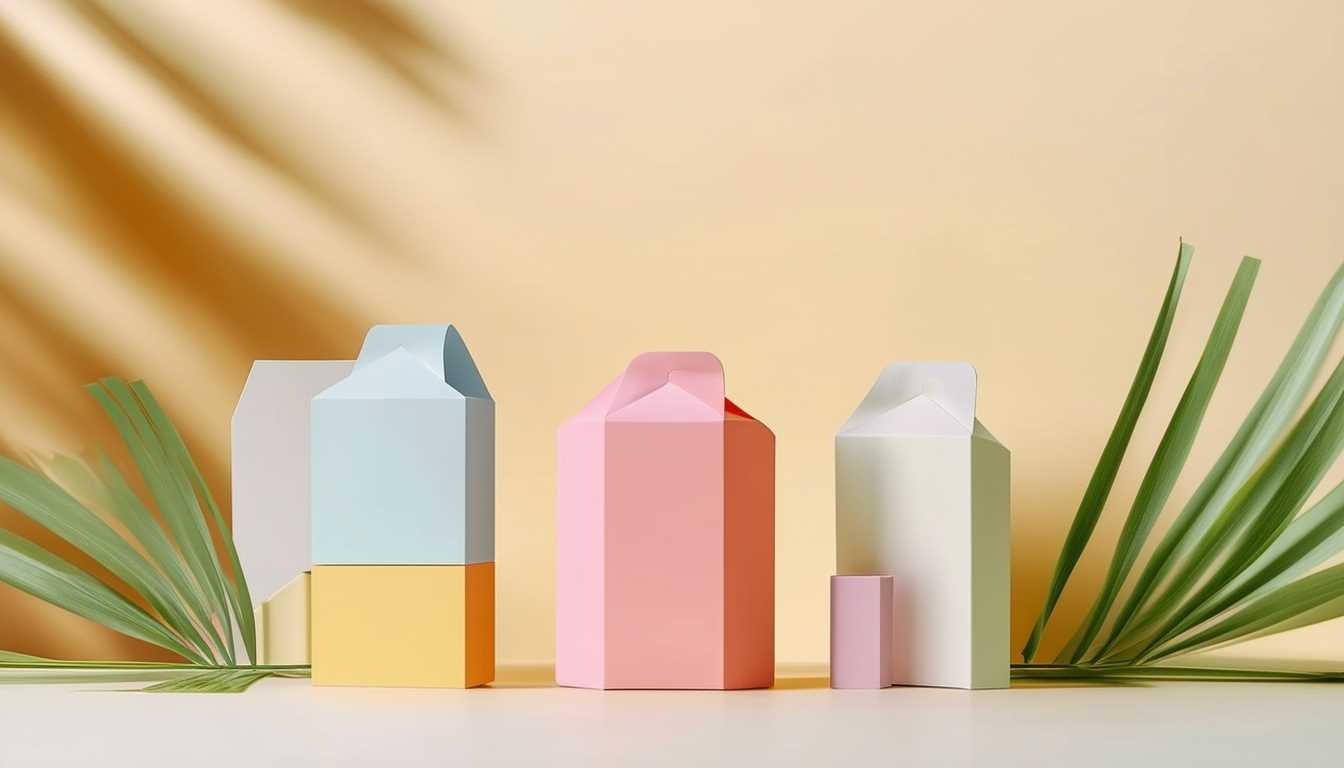
The Rise of ‘Anti-Design’ Packaging—and Why It’s Weirdly Effective
In a world that often thrives on perfectly polished, Instagram-worthy visuals, a new trend is making waves in the packaging world: anti-design.
At first glance, these unconventional designs might seem like an accident—disorganized layouts, clashing colors, and chaotic fonts—but don’t be fooled.
Intentional and Effective
Anti-design packaging is an intentional movement, one that’s subverting the polished, predictable norms of design in favor of something raw, rebellious, and even a bit disorienting.
What started as an underground art and graphic design trend has now made its way into mainstream packaging, and it’s proving to be incredibly effective.
But why are brands embracing this seemingly chaotic approach?
Let’s dive into the world of anti-design packaging and explore what makes it so compelling for today’s consumers.
What Is Anti-Design Packaging?
Anti-design packaging takes a step away from symmetry, balance, and traditional design principles. It often incorporates asymmetry, mismatched elements, and seemingly “imperfect” features.
Think of custom packaging that uses disruptive fonts, random patterns, or deliberate design flaws. This approach aims to break all the rules, making it stand out in a world where everything seems meticulously crafted.
While traditional packaging design focuses on clarity, readability, and brand consistency, anti-design leans into imperfection and surprise, allowing brands to convey bold messages and stand out in crowded markets.
Some might even argue that anti-design is about breaking free from the “corporate” look—something more authentic, more real, and definitely more unconventional.
Why Is Anti-Design So Effective?
You might wonder: Why would consumers want to buy something that looks, well, “ugly”? The answer lies in the psychology behind it.
There are several key reasons why anti-design packaging works so well:
1. Breaking Through the Noise
In today’s saturated marketplace, where every product is vying for attention, packaging needs to stand out.
Anti-design does just that by creating a stark contrast to the polished, minimalist designs that dominate store shelves. It grabs attention through its uniqueness and unexpectedness, making consumers stop and take notice.
2. Rebellion Against Perfection
Consumers are increasingly craving authenticity in the brands they support. They’re tired of the sleek, perfect, and curated branding they’re bombarded with on a daily basis.
Anti-design packaging taps into this desire for something “real” and imperfect. It gives the feeling of a brand that isn’t trying too hard to fit in or follow the rules—something that feels fresh and rebellious.
This shift towards rawness and imperfection is often associated with countercultures and individuality, making anti-design appealing to consumers who reject mainstream or “mass-produced” ideals.
3. Nostalgia and Subverting Expectations
Many anti-design trends draw inspiration from retro design styles and nostalgia, using vintage fonts, vibrant colors, and unpolished graphics.
This creates an emotional connection with consumers who are longing for the past. It taps into a collective memory of earlier design eras, when everything was a little less perfect and a lot more experimental.
Moreover, by breaking design rules, anti-design packaging subverts expectations and challenges conventional beauty standards. It makes a statement that packaging doesn’t have to be “pretty” to be effective or valuable.
Examples of Anti-Design Packaging in Action
1. Craft Beers and Independent Spirits
The craft beer and independent spirits industries are prime examples of how anti-design packaging has taken off. Many breweries and distilleries embrace this trend, opting for chaotic, hand-drawn labels or unexpected fonts.
These brands often want to convey a sense of authenticity and individuality, embracing imperfection as part of their story. Their packaging often reflects a non-conformist attitude, which resonates with consumers who value the uniqueness of small-batch, artisanal products.
Take, for example, BrewDog or Dogfish Head Brewery—both of these brands often use loud, in-your-face packaging with bold text and graphic elements that feel unpolished but still purposeful. It’s packaging that says, “We’re not afraid to be different.”
2. Streetwear and Fashion Brands
Streetwear brands like Supreme and Off-White often incorporate anti-design into their packaging and visual identity.
Supreme, in particular, has built a reputation for using minimalism in unexpected ways, such as stark red backgrounds with bold white typefaces. But they also introduce anti-design concepts in collaborations and product releases, sometimes creating packaging with a deliberately “distressed” aesthetic, making it feel more exclusive, more rebellious, and less “polished.”
Off-White, on the other hand, often mixes striking graphics and non-traditional layouts on their packaging to create an almost chaotic visual experience. Their packaging feels more like art than just a box or bag to store a product, inviting customers to take a second look.
3. The Rise of ‘Ugly’ Beauty Packaging
In the beauty industry, “ugly” packaging has also become a thing. Brands like Glossier and Milk Makeup have used anti-design principles to embrace simplicity and rawness in their packaging, which contrasts with the ultra-polished, luxury aesthetic seen in traditional beauty packaging.
These brands often go for an intentionally “unfinished” or minimalist design that feels less commercial and more approachable. It’s a message to consumers that their products are for real people, not just beauty icons.
The Psychology Behind Anti-Design Packaging
1. The Power of Imperfection
Humans have a natural tendency to find beauty in imperfection. This is rooted in the Zen philosophy of Wabi-Sabi, which celebrates the beauty of things that are imperfect, transient, and incomplete.
When custom packaging design elements embrace imperfection, it resonates with consumers on a deeper, more emotional level.
It’s a reminder that, just like the products themselves, we are all flawed and beautiful in our own ways.
2. Defying Traditional Beauty Standards
Anti-design also challenges traditional beauty standards by embracing disruption and chaos.
This aligns with broader cultural shifts that value diversity, individuality, and authenticity over uniformity and perfection.
By embracing anti-design, brands can create a visual identity that feels real and connected to consumers’ everyday lives—something they can relate to and connect with emotionally.
3. Creating Memorable Experiences
Memorability is a key factor in consumer purchasing decisions. Anti-design creates memorable packaging that makes an impression precisely because it breaks the mold.
It’s not easy to forget a product with packaging that feels like it was intentionally designed to be imperfect, quirky, and different. Consumers are likely to recall and discuss the packaging, generating word-of-mouth buzz and organic marketing.
Why Anti-Design Is Here to Stay
The success of anti-design packaging can be attributed to the current cultural climate. In an era of mass production and highly curated digital lives, consumers crave something that feels more personal, real, and even messy.
The rise of anti-design packaging is not a fleeting trend—it’s a response to the cookie-cutter nature of modern consumerism.
Brands are using anti-design to challenge traditional aesthetics, defy expectations, and create more meaningful connections with their audiences.
So, while anti-design may look like a step back in packaging evolution, it’s actually a step forward in terms of consumer engagement, emotional connection, and brand identity.
By embracing imperfection and uniqueness, anti-design has proven that sometimes, the best way to stand out is to break all the rules.



